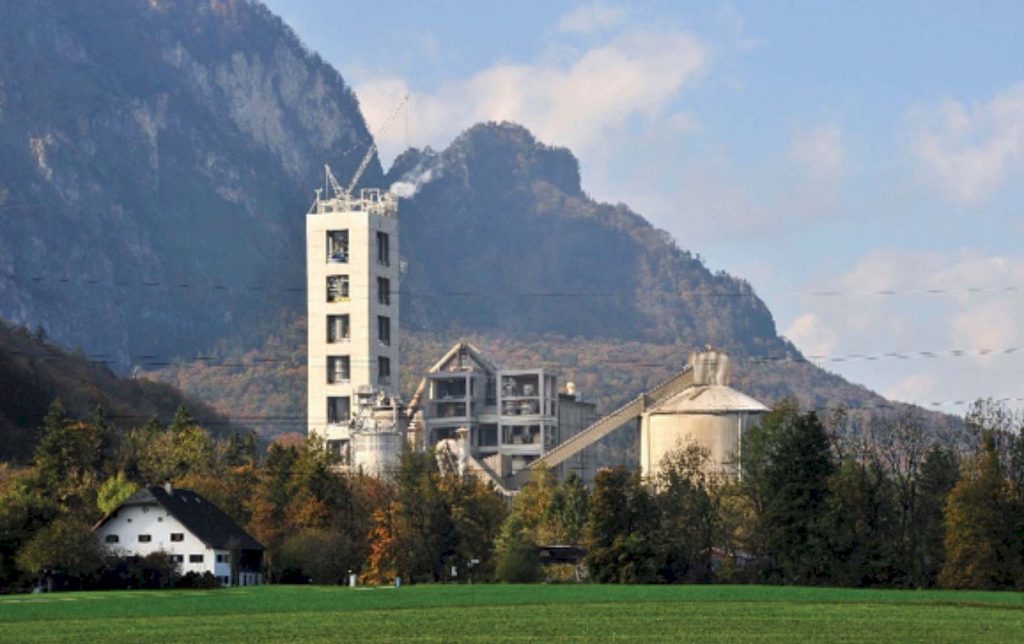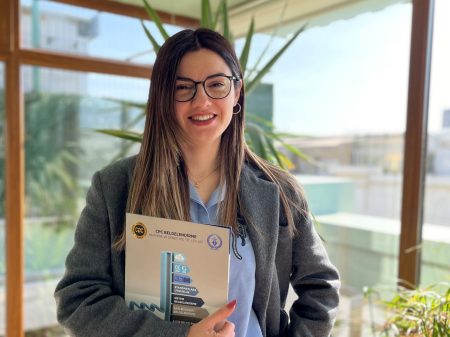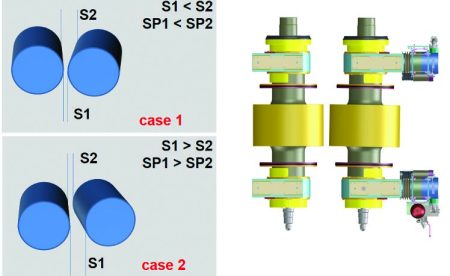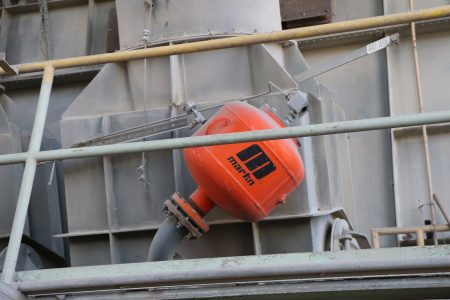Introduction
At first, the usual concerns about “putting water onto a rotary kiln” should be thrown overboard, because water onto an, admittedly, hot rotary kiln is certainly nothing special, recognizing that a rainstorm will bring not less water than the following addressed system.
Increasing requirements relating to energy consumption, productivity, emissions and operational costs nowadays lead to different enhancements cement producers are faced with. Processes need to be redefined and adapted. Machines have to be upgraded and optimized, used technologies have to be evaluated and assessed and last but not least employees need to be trained and involved. When looking at kilns this development ends mainly in higher daily production rates and an increased usage of alternative fuels – just to name two of the trends. The dark side of this continuous development in operational optimization can be seen in the increased efforts maintenance teams have to put into the kiln operation. Over the year they have to spend plenty of time to keep the kiln running from one planned revision to the next one without unnecessary and unplanned kiln stops. In this context one parameter is getting more and more difficult: keeping the kiln shell temperature under control and avoiding high variations of ‘hotter temperature peaks’ when looking onto the entire circumference of a kiln section.
The kiln shell temperatures nowadays seem to tend to vary faster and more unpredictable than this was the case several years ago. Beside hot spots and typical areas on the kiln shell where temperatures from time to time increase more problematically (e.g. close to the tires, within the sinter zone etc.) it seems that formerly not-so-critical areas of the kiln shell tend to heat up unexpectedly and sometimes surprisingly as well. To work against this trend of temperature increases on kiln shells KIMA Echtzeitsysteme in Juelich, Germany developed the KilnCoolerTM, a water evaporation system for kiln shells. Which risks does a water evaporation on hot metal surfaces might come along with? The system does not provide a miracle but it supports very much to avoid an unexpected immediately kiln stop users report. Let’s look into that in the following article.
When talking to experienced kiln operators and asking them which circumstances they think are having the biggest influence on the temperature increase on kiln shells in their opinion, one can list four possible main reasons from material and equipment sight of view most of the operators named:
• Increased use of alternative fuels -> leading to higher wear on the refractory and highly variating coating conditions because of changing conditions. • Larger kilns with increasing mechanical tensions -> leading to kiln ovality that causes damage of the refractory lining .
• Use of inappropriate refractories (insufficient resistance and lifetime).
• Uneven coatings.
Of course there are several additional reasons which have further influences on the development of the kiln shell temperature like the mode of operation, the environmental conditions etc.
Whichever is or are the main reasons for a critical temperature increase differs from kiln to kiln, plant to plant and country to country, but the main possible effects are nearly everywhere the same: Increasing shell temperatures up to emerging hot spots or red spots leading to an unplanned emergency stop of the kiln.
The duration of such a stop can easily take up to 6 days or even more. When calculating the costs of the resulting production losses already under conservative assumptions one can easily see the big commercial potential underlying the prevention of an unplanned emergency stop. Table 1 shows an example calculation for a kiln with 4.000 tpd. This example calculation does not take into account the additional costs occurring from an emergency stop of the kiln (e.g. salary costs of the people who have to care of the unplanned kiln maintenance works, the costs of additional fuel needed for heating up the kiln again etc.).
Already this simple calculation shows the strong increase of costs of production loss when simply replacing the 4.000 tpd by higher production rates like 10.000 tpd or more. If plants would be in the situation to save all this additional losses by keeping the kiln under operation until the next planned shutdown, all this savings could be used for other important optimization projects and take away some of the pressure lying on the plants nowadays.
If one would like to avoid a stop of the kiln and the additional costs of production loss and maintenance works, it is urgently necessary to cool down the kiln shell, bring the temperatures back into balance and keep them within the desired range at the according area. The key to success in this case is the controlled punctual cooling and its efficiency. When comparing the available cooling media air and water from the physical point of view, the cooling efficiency of water is several orders of magnitude higher than the one of air. The following exemplary calculation (under the assumption provided in Table 2) shows this big difference in cooling efficiency:
When spraying water to a hot metal surface one needs to take care of using the right amount. Too much water means the cooling rate might be too high as well and mechanical tensions might arouse with a risk of damages in the metal structures. Too little water and the temperatures might come down too slowly or in the worst case still increase. When using the right amount of water one can cool down temperatures as fast as necessary and stabilize them at the desired set point. For this a water cooling system needs beside other features four main functionalities:
1. A precise and reliable temperature measurement of the area which should be kept under continuous temperature control,
2. Water nozzles allowing the water spray in the right shape thus the water can reach the surface as droplets and evaporate completely,
3. A control system in the background taking care of the correct interactions between temperature measurement and water spray,
4. A continuous self-check of the system to ensure its operational safety.
Due to this reason the presented patented kiln cooling system comes along with a basic configuration of 4 water nozzles each combined with an infrared pyrometer for surface temperature measurement and operated by a high level control. Each IR-pyrometer has a measurement range of 120°C/248°F to 1000°C/1832°F and is kept clean by a small dust protection cab flushed with a small amount of air. Independently from the temperature range of the pyrometer the controller of the KilnCooler avoids any water spray onto a surface of more than 500°C. This safety limit value can be manually reduced of course as well.
The water nozzles are available with different shapes of the aperture (flat, round…) and different flow rates. The possibility of exchanging the nozzles within minutes allows the fast adaption of the system according to its operation site and necessary cooling rate. The total cooling length of one of this portable units is 2.6 m. For larger areas the same systems can be daisy chained and – starting from a total cooling length of 10 m – a permanently assembled stationary solution is available.
The big advantage of this sophisticated water cooling system is – beside the cooling efficiency – it’s possibility of punctual cooling. The water flow can be switched off and on within milliseconds which is not possible with nowadays used air blowers. This is important for bringing back the temperatures of a hot (or even ‘warm’) area back into balance with the lower temperatures of the surrounding areas targeting the reduction of the mechanical tensions arousing because of this difference. The effectiveness of a continuous cooling in regard to the temperature rebalancing in comparison to the punctual cooling is much lower. The reason for this is that areas (e.g. on the circumference of the kiln) which do not need to be cooled will be cooled nevertheless.
By punctual cooling of only the hot area the mechanical tensions can be reduced. But the risk of a too high cooling rate still exists and one has to take care of it as well. In the area of a warm or hot spot the metal expands, leading to high tension in the steel and deformation, which also affects the refractory. Continuous cooling with a blower onto the entire circumference of the kiln will cool not only the hotter area, but also the complete circumference, which leads to shrinking of the segment and enhanced stress for the refractory.
By evaluation, calculation and made experiences on site it turned out that a cooling rate of 2°C/min./ X°F (figure 6) is a good value for cooling down the temperatures fast and reducing the mechanical tensions at the same time. This value also leaves enough space for adjustments by the high level control if necessary. As long as the metal temperature does not reach 600°C/1112°F spraying water to the hot metal does not harm micro structure of the steel. The KilnCooler controller itself is adjusted from KIMA E’s site to a upper limit temperature of 500°C as above heated kiln shells should end in a kiln stoppage for any case.
The practical proof of a safe and highly efficient cooling of the kiln shell was particularly provided with the development partner HeidelbergCement at Ennigerloh Factory in Germany. Accompanied by the Association of the German Cement Industry (VDZ), the thermal scan taken and illustrated in Fig. 7 shows a 24-hour plot observation.
Here, the use of the system is shown on a kiln shell section being irregularly heated by more than 50 Kelvin. Starting with the commissioning of the system at about 14:00 hours, cooling down by about 50 K was achieved within 2 hours in this real situation. While reaching the set-point of 350°C, the amount of water spray is automatically reduced significantly. Only 6 hours after start- up, the cooling system using water evaporation was switched off. The only slight increase in temperature and the stabilized status after switching off observed at that time, suggests that some coating has been newly formed in the kiln, so that any further forced cooling is no longer necessary. Applications at various cement plants like described later in the case studies clearly confirm that the treatment of a hot spot by means of the system with its controlled water cooling avoids unexpected kiln stops.
Considering that the resistance of steel against alternating stress depends on many parameters, the use of the KilnCooler can be seen under another important light. Steel altering is depending on:
• temperature,
• surface finish,
• metallurgical microstructure,
• presence of oxidizing or inert chemicals,
• residual stresses,
• but most notably, the number of cycles, the steel undergoes
As the number of cycles is determined by the kiln‘s rotation, the other parameters and especially the temperature should be observed carefully and kept under control. To avoid fatigue of the shell, it is recommended, that the temperature of the shell is kept below 400°C (752°F).
The graph (Wöhler-Curve.Fig.9) shows in principle, the fatigue behaviour of steel under stress, induced by an alternating load. It shows the magnitude of a cyclic stress (S) against the logarithmic scale of cycles to failure (N). The number of cycles to failure is significantly reduced, if the steel has an enhanced temperature. Imagine that the steel temperature controlled and harmonized at the entire circumference by the KilnCooler can be an important argue for kiln life time at the end.
So it makes sense to bring the KilnCooler into operation already at temperatures of 250 and 300°C and not only at a so called ‘hot spot’. By the way: when we at KIMA Echtzeitsysteme talk here about hot spots we talk about temperatures definitely below 500°C and NOT RED SPOTS at all! If the kiln shell comes up to temperatures of 480°C and above the refractory might be already heavily damaged or is gone. In this case also the KilnCooler will not help any more so the kiln should be stopped. The system of course should not solve problems which arise from poor maintenance or the choice of wrong or low performance refractory material.
Finally three more questions might arouse when talking about spraying normal water containing lime to the hot kiln shell.
1. Does the occurring lime layer on the shell have any influences on the heat transportation?
Answer: The answer is that there is a theoretically critical thickness which would once it would have been reached disturb the heat transportation from the inside of the kiln through the shell to the outside. But experience has shown that the thickness of the layer which occurs never reach this critical thickness due to the very dry conditions on the shell and the movement of the kiln itself. The layer breaks off the kiln far before its thickness can reach the critical one.
2. Could the white stripes of the lime layer influence the reading of used kiln scanners?
Answer: The emissivity of limestone is 0,95 and much higher than the one of rusty steel with 0,69. Due to this there is no negative influence of the lime layer on the kiln scanners.
3. Is it possible that the lime can block the nozzles or the tubes of the system?
Answer: Of course the lime content in the water can possibly lead to blockages, but for this eventuality the system is continuously doing self-checks and monitors the water pressure and flow rate. In case of blockage – which by the way never showed up until today even with system in operation for several months – the system would drop an error message and indicating a malfunctions via the included traffic light to inform operators.
Then actions like exchanging/cleaning the dirt trap, the nozzles or valves can be initiated and carried out within minutes.
Some Case Studies:
LEUBE Cement, Gartenau, Salzburg, Austria:
“In Salzburg, directly located at the Alps a rain shower is usually heavy and gives more Water onto our kiln than the presented system. We are using the system since August 2015.
The system has given us in winter 2015 more than 2 month full additional production time when first hot spots rise because of new alternative fuel burning and thinner refractory than expected. Just in front of the burning zone we have had serious problems to create a coating and balls was created first time ever in our production. It was the benefit of the presented system, that we were able to create a stabile coating in that region again and reached the scheduled maintenance stop in January under full production. With air cooling fans we were not able to solve the problem.
Today the system is in daily use when it comes to coating drops and hot spots.” (Engineer Klaus Czepl, Production Manager)
Holcim plant Hoever, Hannover, Germany:
“When we bought the system in November 2015 we were extremely lucky. Only a few weeks later and just before the Christmas holidays we have had fundamental problems with hot spots. A massive hot spot as result of very thin refractory lining and permanent coating drops were treated with the water spray kiln cooler and within hours we developed a new coating and stabilized the temperature profile of the kiln surface.
Without the system we would have had to stop the kiln over the 2 weeks holiday as our maintenance team was very limited of course. So we were able to operate until our scheduled kiln stop in January. A success story – no doubt! “ (Engineer Matthias Heuer, Production Manager)
Afrisam Plant Dudfield, Lichtenburg South Africa:
“The presented kiln cooling system based on controlled water spray works wonderfully. You can clearly see the section we have had some hotter areas at 12,0 m dropped from 350 Degrees C to 250 Degrees C within short time.
(Only a few hours later…) We have had a second spot at 9,0 m of 390 Degrees C. We moved the system and the temperature dropped from 390 Degrees C to 330 Degrees C in +- 4 hours.” (Theo Conradie, Process Engineer)
Summary
The past 2 years of operations have shown that worldwide plants with occurring temperature problems on the kiln shell were able to prolong kiln runtimes for weeks and months by using the water cooling system developed in Germany. It took care of hot areas and kept the temperatures within those areas at the desired set point temperatures. Also it has shown that – where possible – new coatings have been built up in the cooling area providing a more even thickness of coating on the according circumference. The system supported maintenance teams by giving them enough time for planning the necessary maintenance works and talking to the refractory suppliers. Due to the very low energy consumption (2-20W) the operational costs are very low. It has been shown that the amount of water sprayed to kiln is comparably low (e.g. when comparing with the amount of water dropped on the kiln over the year or during rainy seasons) and does not have any negative influence on the kiln steel as the system is foreseen for operation below 500°C only. The cooling efficiency of water combined with the possibility of controlled punctual spraying leads to a game changing technology when it comes to increasing temperatures on kilns at the end of a production campaign. As earlier used in lower temperature regions already as more effective the support to increase the live time of steel and refractory will be.






